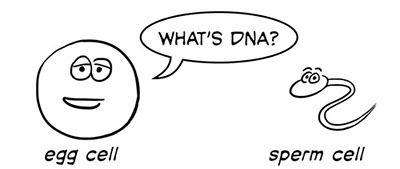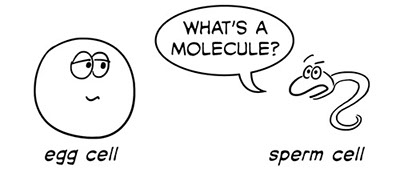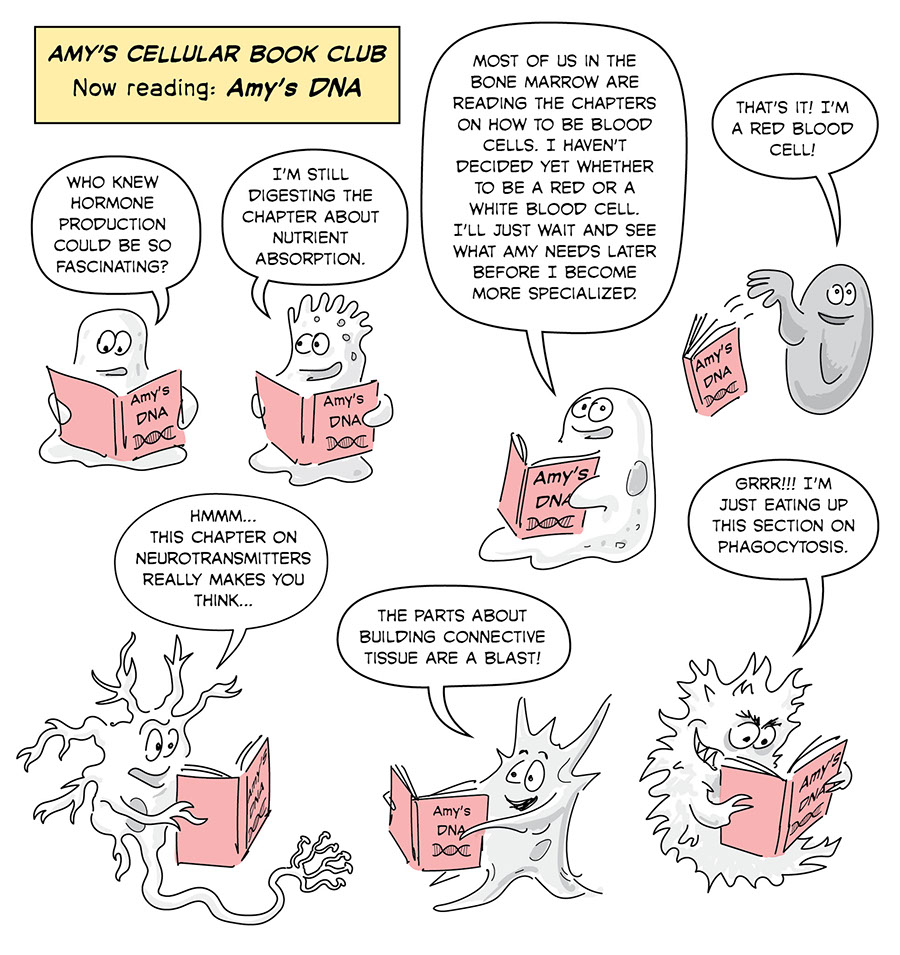Cells Teaming Up (2016 VERSION)
RETIRED BETA VERSION - For current versions of the SciGen materials, please visit serpmedia.org/scigen
DNA AS A STARTING POINT
The human body is made of trillions of cells. These cells have various special jobs. There are skin cells, muscle cells, nerve cells, and so on. They all work together in a huge cooperative whole: a human being.
But all those different cells in one fully developed human being come originally from a single fertilized egg cell. When that egg cell from the mother gets fertilized by a sperm cell from the father, the resulting fertilized egg cell has a complete set of DNA that is a mixture of the DNA from both parents.
 Good question.DNA is a kind of molecule—
Good question.DNA is a kind of molecule—
There’s no need in this unit to worry about the details of how DNA works, but in case you’re curious, there are four basic structures that make up all those millions of ladder rungs. So the DNA’s code is “written” in four different “letters.” What’s with all the quotation marks? They’re just a friendly reminder that the comparison between DNA and written language is an analogy, even though there are also differences. more about DNAWell, we’re not going to get deep into the chemical details here. Let’s just say for now that molecules are teeny-tiny particles of matter, made of two or more atoms. As molecules go, DNA is big (it’s made of millions of atoms stuck together in a structure resembling a twisted ladder) but it’s still tiny enough to fit inside our invisibly small cells.
The special thing about DNA is that it carries operating instructions for living things. Variations in the rungs of DNA’s twisted ladder form a special DNA code. Other molecules inside of cells “read” the DNA code and cause the cells to act on the instructions.
Elephants and pigeons and oak trees are different from each other because they have different coded instructions in their DNA. DNA is contained in cells (the cells of elephants, pigeons, oak trees, and every other living thing, including humans). DNA is like an instruction manual that cells follow, so that they know what to be and do. When cells reproduce by dividing, each new cell gets a copy of the DNA instruction manual.
Sex cells (eggs and sperm cells) are different from the rest of the cells in a multicellular organism. They are produced in a way that mixes up the DNA so that there can be variation in a person’s offspring. That’s why siblings can be so different (although identical twins are very similar because they come from the same fertilized egg cell and have the same DNA). But anyway, in these lessons we’re focusing on body cells, not on sex cells. Your body cells (all your cells that are not sex cells) share the same DNA. more about sex cellsSo, back to that fertilized human egg cell… When that single egg cell divides in two, each of those two cells gets an identical copy of the original cell’s DNA. Those two cells divide, and each of the four resulting cells gets a copy of the DNA. And so on: all the body cells in a human come from the same original fertilized egg cell, and therefore they all have the same DNA. That DNA carries the coded instructions that the cells in a human body follow in order to live and do their jobs.

With the first few divisions, as one fertilized egg cell becomes two cells, and two cells become four cells, the cells are all essentially the same. However, as a fertilized egg develops into a fetus in its mother’s womb (with eyes, brain, spinal chord, heart, limbs, etc. starting to take shape), something interesting happens. Many differences begin to show up between the dividing cells.

Eventually, a human being winds up with about 200 different kinds of cells in his or her body. These different kinds of cells do different things, and many of them look very different from one another. But they all have exactly the same DNA, the shared DNA all of them inherited from that first fertilized egg cell.
So here’s the big question: How is it possible for them to be so different when they’ve got identical DNA instructions?
 Turn and Talk:
Turn and Talk:
If all the cells within an organism share the same DNA, then how do they end up being so different from each other?
Stem cells: Cells that have not yet specialized are called stem cells. When the body needs to repair itself or grow, stem cells can become specialists. In general, once a stem cell specializes, it (and any cells that come from it) cannot go backwards and become less specialized again. Cell specialization is pretty much a one way street. So until they get a signal that they need to specialize, stem cells just wait quietly, or else divide to produce extra stem cells for later. (Cartoon: stem cell waiting to decide what specialty to go into.) What about stem cells?It turns out that the cells in a multicellular organism become different by paying attention to different parts of their DNA code. As a human or other multicellular organism develops, its cells read and follow different sections of the organism’s DNA. Different parts of the same DNA become active in different kinds of cells. It’s as if all the cells in one organism are all reading the same book of instructions, but they are reading different parts.
Red blood cells in humans and other mammals are unusual in that they do not have a nucleus. The stem cells they come from have nuclei, but when the stem cells change to red blood cells, they get rid of their nuclei to make room for more hemoglobin (the chemical that allows red blood cells to carry oxygen from the lungs to the rest of the body). Without a nucleus full of DNA instructions, red blood cells cannot reproduce themselves by dividing. As they wear out, they must be replaced from stem cells. This replacement is happening all the time: every second, about two million of your red blood cells die, and another two million red blood cells are produced from stem cells to replace them! (Cartoon of stem cells dividing into denucleated red cells) And red blood cells?By paying attention to certain parts of their DNA and ignoring other parts, the cells in a human body are able to specialize. Which parts of the DNA they pay attention to, and which parts they ignore, depends on chemical signals they get from their environment or from other cells. These signals bookmark certain sections of the DNA to read or skip over. By reading and acting on specially selected sections of their DNA, cells develop different structures and do different jobs.

© SERP 2017
This Science Generation unit is currently in development. If you have comments or corrections, SERP would love to hear from you! Thank you.